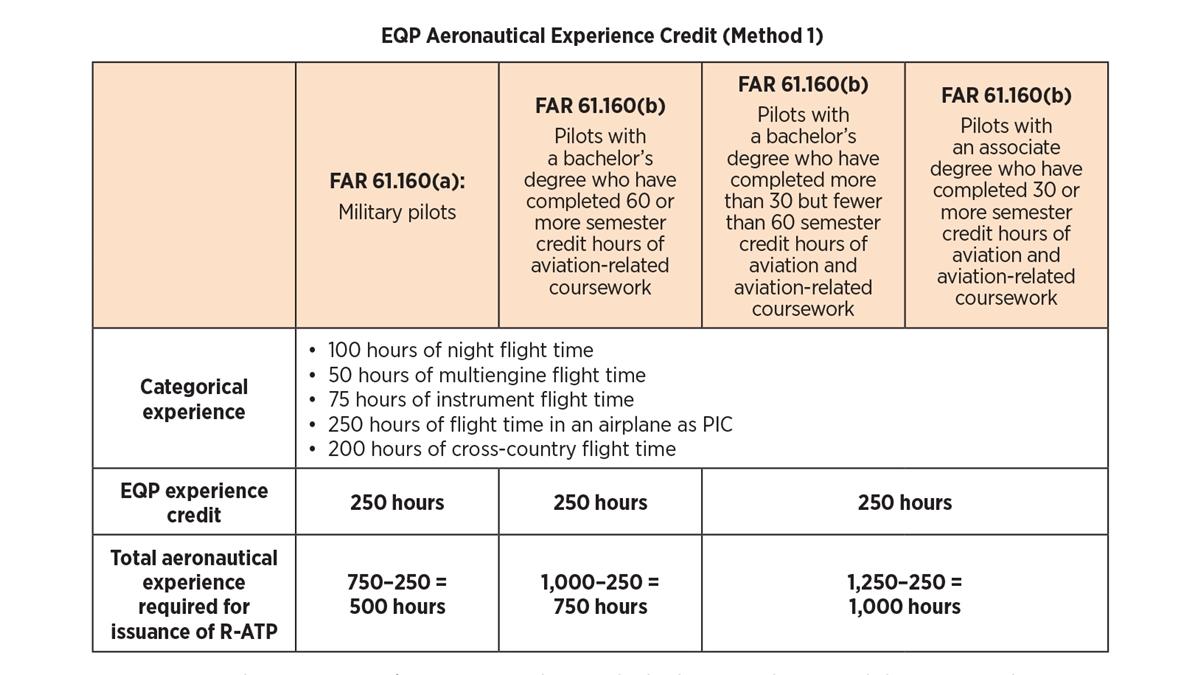Career Pilot: A new path?
One proposal could change airline training


This problem was accelerated by the so-called “ATP Rule,” which imposed a requirement for all first officers to hold an airline transport pilot certificate. The unintended consequence of the rule, which was put in place as a result of the Colgan Air crash at Buffalo, New York, in 2009, has been profound for regional airlines, in particular. Those airlines see their captains being siphoned into the big jet carriers, and fewer newcomers to take the seat of the first officer who just upgraded. One regional is losing 30 pilots a month from its cadre of 2,000 flying employees. Why the lack of interest among potential airline pilots? The price of admission is high: Spend the money to earn FAA ratings, then slog it out as a CFI or flying charters for several years until attaining those ATP requirements.
Present rules allow for a reduction of time to earn a restricted ATP, which allows a pilot to fly as a first officer until he or she obtains the necessary 1,500 hours, based upon academics. Attend a four-year aviation college that has an FAA-approved curriculum and an FAR Part 141 certificate, and the ATP can be had for 1,000 hours; plow through a two-year, FAA-approved program at a university and earn the ATP with 1,250 hours. But now, the FAA is mulling over a new pathway to a further reduction of total flight time required for the certificate: the Enhanced Qualification Program (EQP).
The FAA convened an ATP work group of federal and industry professionals to tackle the challenge of developing a program requiring less time to earn the ATP certificate, yet attain an equivalent level of safety. The group submitted recommendations on the structure, development, submission, and approval of an EQP, an alternative pathway to an ATP certificate with restricted privileges, for consideration by the Air Carrier Training Aviation Rulemaking Committee Steering Committee. Bear in mind the word “recommendations”: Plenty of recommendations are never implemented, and many that are go through extensive changes.
The recommendations propose a pathway that “includes substantial prerequisites; a rigorous candidate assessment process; and intensive, integrated academic and flight training designed to accelerate acquisition and development of knowledge and skills necessary to effective performance in an air carrier line operations environment.” The work group added that these recommendations could “provide an alternative that will result in any restricted-ATP applicant who successfully completes this pathway meeting or exceeding the requirements for knowledge, skill, and quality of performance, by ensuring consistent, recent training and establishment of competencies required for safe operation of multiengine, turbine-powered aircraft in a multi-crew air carrier environment.”
So, what does this all mean to the aspiring airline crewmember? To qualify to merely take the ATP multiengine knowledge test, applicants must complete the ATP Certificate Training Program (ATP-CTP) with 30 hours of academics and 10 hours of simulation training. But, according to the ATP work group, “Neither an ATP CTP nor collegiate coursework is intended to ensure that an ATP certificate applicant with a multiengine class rating is fully competent to operate in air carrier operations before entering into air carrier employment. The ATP WG believes that the training the applicant receives and successfully completes via the EQP pathway will better prepare the applicant to successfully complete the air carrier’s initial new hire training program and enhance the operational safety of the graduate in his or her early years of air carrier operational experience.”
What does the recommended EQP consist of? A dizzying array of airline operations subject matter, including hundreds of hours of classroom instruction and time in flight training devices over three phases: ATP preparation, which satisfies the ATP-CTP requirement; Transport category aircraft training; and air carrier-specific training.
The work group presented two potential methods for reducing the R-ATP hour requirements for pilots who have invested this time and effort in an EQP. One would grant a uniform experience credit to reduce the total aeronautical experience required for a restricted ATP certificate by 250 hours for all successful EQP participants; the other would give a variable credit that would bring the total hour requirement for EQP participants to 500 (see tables).
If the work group’s recommendations are adopted or amended, it would be up to the airlines to develop and support the EQP with FAA oversight of the course. There is some pushback from certain sectors of the industry, airline unions, and even Congress—which feels that any reduction in ATP time compromises safety—so the ultimate outcome of the proposals is still, as they say, “up in the air.” But, at the very least, the FAA is beginning to entertain some creative solutions to make access to the airline career path affordable and, thus, inspire more to take a hard look at donning an airline uniform. The EQP, if it flies, could be a good first step in mitigating the pilot shortage crunch.


